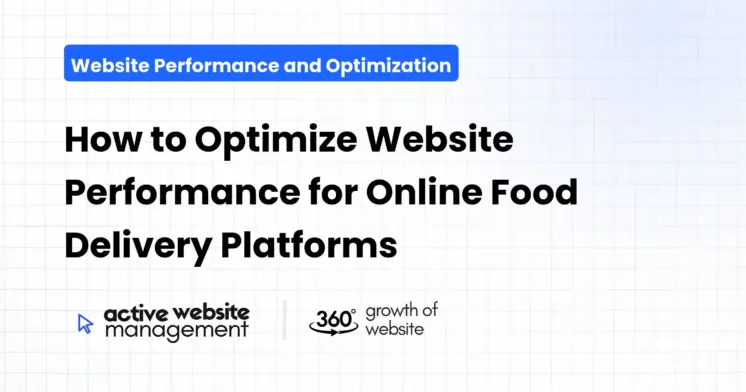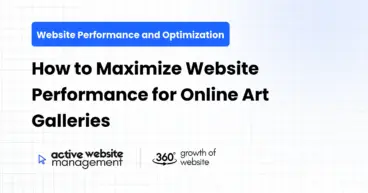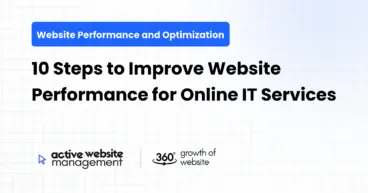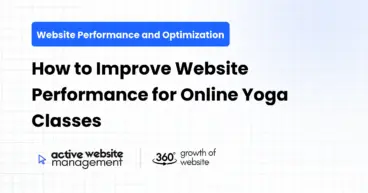February 1, 2025
15 min read
The digital marketplace for food is a bustling bazaar. Every click, every scroll, and every second counts. For online food delivery platforms, speed and efficiency aren’t just nice-to-haves; they’re the bedrock of success. A slow website can send hungry customers straight to your competition, leaving you with missed orders and frustrated users. This article will delve deep into the crucial area of food delivery website speed, exploring why it matters, how to measure it, and most importantly, how to drastically improve it. We’ll dissect the nuances of restaurant platform performance and offer actionable strategies for online order optimization. Let’s embark on this journey to create lightning-fast and seamless food ordering experiences.
Why Speed Matters: The Hunger Games of Online Ordering
Imagine a hungry customer, scrolling through your menu, their stomach rumbling. They click on a tantalizing burger, only to be met with a spinning wheel of doom. What happens next? They bounce. They find a faster, more responsive alternative. This isn’t a hypothetical scenario; it’s the reality for many online food delivery platforms. Slow website performance translates directly into lost revenue.
The User Experience Impact
- Lost Customers: Studies show that users abandon websites after just a few seconds of loading time. In the food delivery sector, where immediacy is key, every delay is a potential lost sale.
- Reduced Engagement: A slow site discourages browsing. Customers are less likely to explore your full menu, resulting in smaller order sizes and decreased overall engagement.
- Negative Brand Perception: A sluggish website creates a negative impression. It suggests a lack of professionalism and can erode trust in your brand.
- Lower Conversions: Ultimately, slow speeds lead to lower conversion rates. Potential customers who are eager to order are turned away by frustration, and that is bad for business.
The Search Engine Optimization (SEO) Impact
Google and other search engines prioritize user experience. Website speed is a significant ranking factor. A slow site will be penalized, making it less likely to appear in search results. This means:
- Reduced Organic Traffic: If your site doesn’t rank well, fewer people will find you through search engines. This reliance on paid advertisements will affect your bottom line.
- Higher Bounce Rates: Slow websites see higher bounce rates (users leaving the site immediately). This tells search engines that your website isn’t user-friendly, and they’ll further reduce your visibility.
- Lower Search Rankings: All these factors contribute to a lower ranking in search results, further hindering your chances of attracting new customers.
- Poor Brand Visibility If your website is not visible to search engine, your customer won’t be able to find you, thus decreasing brand visibility.
Don’t Just Maintain Your Website—
Grow It using Active Website Management! Don't Wait for Growth—Accelerate It with Active Website Management
The Bottom Line: Revenue Loss
The cumulative impact of poor website speed is significant revenue loss. Think about the value of each customer, the repeat orders they could make, and the potential for growth. A slow website is actively working against your business goals. It’s not just about speed; it’s about survival in a competitive marketplace.
Before you can fix any performance issues, you need to understand how your website is performing. Several tools can help you measure various aspects of your site’s speed and efficiency.
Google PageSpeed Insights
This free tool from Google provides a comprehensive analysis of your website’s speed on both desktop and mobile devices. It gives you a score and detailed recommendations on how to improve. Key metrics include:
- First Contentful Paint (FCP): Measures the time it takes for the first text or image to appear on the page.
- Largest Contentful Paint (LCP): Measures the time it takes for the largest visible element to load on the page.
- Cumulative Layout Shift (CLS): Measures visual stability of a page.
Practical Application: Use PageSpeed Insights regularly to monitor your website’s performance, identify areas that need improvement, and track the impact of your optimizations. Pay close attention to the warnings and recommendations as they pinpoint specific issues.
GTmetrix
GTmetrix is another excellent tool that provides a detailed analysis of your website’s performance. It offers a more granular view of various metrics. Key features include:
- Waterfall Charts: Shows how each resource loads on your page.
- Page Load Time: Measures the total time it takes for your page to load.
- Page Size: Shows the overall size of the resources on the page.
Practical Application: Use the waterfall chart in GTmetrix to identify specific resources that are slowing down your website. This allows you to focus your optimization efforts effectively.
WebPageTest
WebPageTest is a powerful tool for conducting advanced performance testing. It allows you to test your website from various locations and devices, simulating real-world conditions.
- Filmstrip View: See a visual breakdown of how your page loads over time.
- Advanced Metrics: Offers a wealth of advanced metrics for in-depth analysis.
- Testing from Real Browsers The results are more accurate because it uses real browsers for testing.
Practical Application: Use WebPageTest to understand how your website performs under different network conditions and on various devices. This helps you create a truly optimized experience for all users.
Beyond using tools, certain KPIs are vital to track continuously. These provide a holistic view of website performance:
- Bounce Rate: The percentage of users who leave your site after viewing only one page. A high bounce rate often indicates slow loading times or a poor user experience.
- Average Session Duration: How long users spend on your website. Shorter durations often suggest they didn’t find what they were looking for or were frustrated by delays.
- Conversion Rate: The percentage of website visitors who make a purchase. This metric is directly impacted by your website’s speed and overall user experience.
- Customer Satisfaction Scores: How satisfied customers are with your online ordering process. Feedback and surveys can provide valuable insights into user pain points.
Practical Application: Monitor your KPIs regularly and correlate any changes with specific performance improvements you make. This will help you see the real-world impact of your efforts.
Optimizing Images for Speed: A Visual Feast Without the Wait
Images are essential for showcasing your delicious food, but they can also be a major culprit in slowing down your website. Optimizing images is critical for improving load times.
- JPEG: Best for photos and images with many colors. JPEG images can be compressed, reducing file size but sometimes at the cost of image quality.
- PNG: Ideal for images with transparent backgrounds and logos. PNG provides lossless compression, meaning no loss of image quality, but file sizes can be larger than JPEGs.
- WebP: A modern image format that provides superior compression compared to JPEG and PNG. If browser compatibility allows, WebP is the most efficient option.
Practical Application: Use WebP where possible, and use JPEG for photos. Use PNG for logos, icons and image with transparent backgrounds. If possible, use a CDN that supports image optimization to have the best image quality and delivery performance.
Compressing Images Without Losing Quality
Use tools to compress your images before uploading them to your website. There are both online and software-based options available:
- TinyPNG/TinyJPEG: Online tools that compress PNG and JPEG images effectively.
- ImageOptim: A free Mac app that optimizes images with various compression algorithms.
- Adobe Photoshop/GIMP: Software that provide advanced image editing and compression options.
Practical Application: Compress all images before uploading them to your website. Experiment with different compression levels to find the optimal balance between image quality and file size.
Don't Wait for Growth—Accelerate It with
Active Website Management Don't Wait for Growth—Accelerate It with Active Website Management
Using Responsive Images
Responsive images adjust their size based on the device screen. This ensures that you are not sending large images to mobile users who have smaller screens.
- Use the
srcset attribute with the <img/> tag to specify different image sizes. The browser will automatically choose the appropriate size for the user’s device.
Practical Application: Implement responsive images for all visuals on your website. This will improve performance on mobile devices significantly and reduce data usage.
Lazy Loading Images
Lazy loading defers the loading of images that are not visible on the screen when a page loads. These images are loaded only when the user scrolls down and they come into view.
- Use the
loading="lazy" attribute with the <img> tag to enable lazy loading. - JavaScript Libraries: Some libraries can provide more advanced lazy loading functionalities.
Practical Application: Implement lazy loading for all images on your website. It will significantly reduce the initial page load time and enhance the browsing experience.
Minifying HTML, CSS, and JavaScript: Streamlining Your Code
Website performance is heavily influenced by the efficiency of your HTML, CSS, and JavaScript code. Minifying these files reduces their size and improves loading times.
Removing Unnecessary Characters
Minification involves removing unnecessary characters from your code, such as spaces, comments, and line breaks. This reduces the file size and speeds up the parsing process.
- Online Minifiers: Use online tools such as HTML Minifier, CSS Minifier, and JavaScript Minifier to reduce file sizes.
- Build Tools: Use build tools such as Webpack, Gulp, or Grunt that can automatically minify your code during deployment.
Practical Application: Use these tools regularly as a part of your website maintenance. Integrate them into your development process to ensure that all code is minified before being deployed.
Combining CSS and JavaScript Files
Reducing the number of HTTP requests your website makes can significantly improve load times. Combine multiple CSS and JavaScript files into fewer files.
- Build Tools: Use tools like Webpack to combine code into a single package.
- Code Optimization: Optimize the code before bundling the files to get the best results.
Practical Application: Combine CSS and JavaScript files to minimize HTTP requests. This will reduce load times and improve overall speed.
Optimizing JavaScript Execution
JavaScript can block page rendering if it runs for too long.
- Deferring Scripts: Use the
defer attribute for scripts that don’t need to be run right away. They will be executed after the HTML is parsed and before the DOM is interactive. - Async Scripts: Use the
async attribute to run the script asynchronously. This allows the HTML parsing to continue while the script is downloading and running. - Code Splitting: Split the JavaScript into smaller chunks. This way, only the code needed for the current page will be loaded.
Practical Application: Optimize how your JavaScript is executed using defer and async. Split code into smaller chunks. This prevents the JavaScript from slowing down the rendering of your page.
The server plays a crucial role in website speed. A well-optimized server ensures that data is delivered quickly and efficiently.
Choosing the Right Hosting Provider
- Managed Hosting: Suitable for users who don’t want to manage server details. Managed hosting services handle updates and optimization.
- VPS Hosting: Offers more control and customization options. You have your own virtual server resources.
- Dedicated Hosting: Provides the most control and resources. You get a physical server that is dedicated to your website.
- Cloud Hosting: Cloud hosting is the most scalable option. It provides resources on-demand based on need.
Practical Application: Research hosting options and choose a provider that can handle traffic load. Consider server location and the resources allocated.
Using a Content Delivery Network (CDN)
A CDN is a network of servers distributed geographically. CDNs store static website content and serve it to users from the server closest to their location. This can significantly improve load times for users around the world.
- Cloudflare: Offers free and paid CDN services with various features.
- Amazon CloudFront: A powerful CDN service from Amazon Web Services.
- Fastly: A highly performant and customizable CDN.
Practical Application: Implement a CDN for your website to speed up content delivery globally. Make sure to clear the cache frequently to get the latest updated content.
Caching Mechanisms
Implement server-side caching to store frequently accessed data in memory. This way, the server won’t need to generate the same content on each request.
- Memcached/Redis: In-memory data stores used to cache data.
- Caching Plugins: WordPress plugins can automate caching functionality.
Practical Application: Implement caching on your server to store data to reduce database queries. This will reduce server load and improve response times.
Database Optimization
- Indexing: Add indexes to commonly queried columns to speed up database retrieval.
- Query Optimization: Optimize database queries for faster data access.
- Database Cleaning: Remove unnecessary data from the database.
Practical Application: Optimize database by removing unnecessary data, cleaning database, and optimizing database queries. This ensures efficient data handling.
HTTP/3
HTTP/3 is the latest version of HTTP protocol. It can significantly improve website loading speeds.
- Enabling HTTP/3: It is necessary to enable it on the server and the CDN.
Practical Application: Enable HTTP/3 on your server and CDN to improve speed.
Streamlining the Ordering Process: A Seamless Experience
An efficient ordering process is critical for retaining customers and boosting sales. A cumbersome and confusing order process can lead to cart abandonment.
Clear and Intuitive Menu Design
- Categorized Menus: Organize your menu into clear categories.
- High-Quality Photos: Use high-quality photos of each dish with clear descriptions.
- Clear Pricing: Ensure all prices are prominently displayed.
Practical Application: Design your menu for clarity and intuitive navigation. Make it simple for customers to find what they are looking for and order seamlessly.
Simplified Checkout Process
- Guest Checkout: Offer the option to order without creating an account.
- Minimal Form Fields: Reduce the number of form fields required during checkout.
- Clear Payment Options: Display clear payment options with accepted payment methods.
- One-page Checkout: Keep everything in one place to avoid too many clicks.
Practical Application: Streamline the checkout process to make ordering as quick and easy as possible. This will improve conversion rates and reduce cart abandonment.
Mobile-First Design
- Responsive Design: The website should adapt to the screen size of the device.
- Mobile-Friendly Menu: Ensure the menu is easy to navigate on mobile devices.
- Large Buttons: Use big buttons that are easy to tap on touch screens.
Practical Application: Design with mobile-first in mind. Make sure mobile users can easily navigate and order on their devices.
Order Tracking and Communication
- Real-Time Order Status: Provide customers with real-time updates on the status of their order.
- Notifications: Keep users updated with email and SMS notifications for order updates and delivery confirmation.
- Clear Communication: Provide clear information about delivery times, estimated arrival, and other relevant details.
Practical Application: Maintain regular communication to reduce customer anxiety and to build trust.
Active Website Management: Staying Ahead of the Curve
Optimizing website performance is an ongoing process, not a one-time fix. Active website management is essential for continuous improvement.
Regular Monitoring and Analysis
- Performance Monitoring Tools: Continuously monitor performance with tools like Google PageSpeed Insights, GTmetrix, and WebPageTest.
- KPI Tracking: Track key performance indicators (KPIs) like bounce rates, conversion rates, and average session durations.
- Data Analysis: Analyze collected data to identify areas of improvement.
Practical Application: Regularly monitor your website’s performance using above mentioned tools. Use data analysis to see what areas need improvement.
Updates and Maintenance
- Software Updates: Keep the operating system, web server, database, and other software updated with the latest versions.
- Regular Backups: Backup the website and the database frequently.
- Code Maintenance: Regularly review your code for inefficiencies and deprecated code.
Practical Application: Keep all software updated to avoid security vulnerabilities and make sure to maintain the codes and remove the ones that are not used.
A/B Testing
- Experimentation: Run experiments with different elements on the website.
- Testing Variations: Test variations of your menu, checkout process, and page layouts.
- Data-Driven Decisions: Use data to optimize these areas for better performance.
Practical Application: Run A/B test to see which page version is performing better. Use this data to make changes on your website.
Consider Active Website Management for Long-Term Success
For comprehensive and reliable website management, consider partnering with a company specializing in this field. Active Website Management offers a suite of services including performance monitoring, security updates, and proactive maintenance. Their expertise can ensure your online food delivery platform is always running at its peak, allowing you to focus on growing your business. Their dedicated team can provide expert support, tailored solutions, and ongoing optimizations to help you achieve your business goals.
Conclusion: A Recipe for Success
Optimizing website performance for online food delivery platforms requires a multi-faceted approach. It’s not just about making a website faster; it’s about creating a seamless and enjoyable user experience. By understanding the importance of speed, measuring your website’s performance, and implementing the strategies outlined in this article, you can significantly improve your food delivery website speed. Optimizing for restaurant platform performance and online order optimization is an ongoing effort. Remember to track your progress, adapt to the changing landscape, and always strive to create the best experience for your users. With a commitment to performance, you’ll not only attract more customers, but also increase customer loyalty and profitability. In today’s competitive digital world, speed is not just an advantage, it is a necessity.







